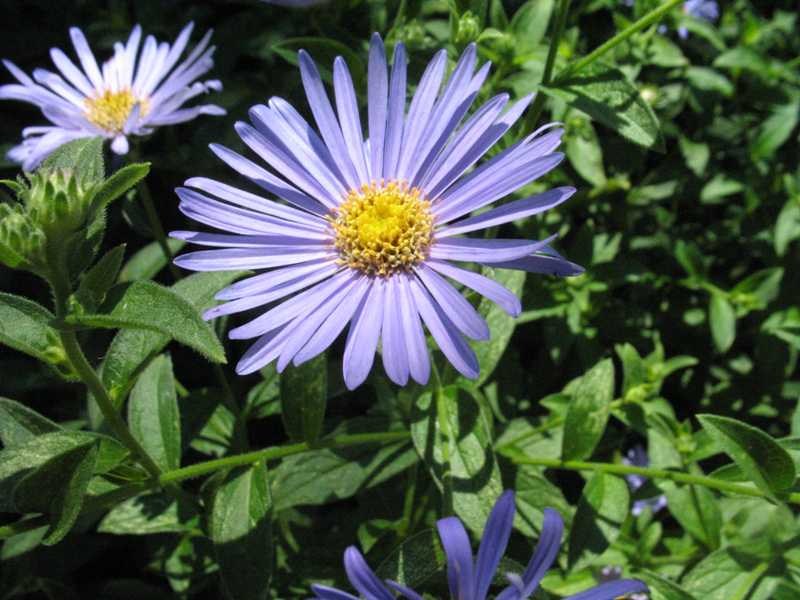Aster (Aster × frikartii ‘Wunder von Stafa’)
Aster
Aster × frikartii, commonly called Frikart’s aster, is a hybrid of A. amellus × A. thomsonii from the Swiss hybridizer Frikart. Some introduced cultivars of the cross include ‘Wunder von Strata’, ‘Monch’, ‘Jungfrau’ and ‘Eiger’.
Genus name comes from the Latin word aster meaning star for the shape of the flowers.
‘Wunder von Stafa’ features 2-3” diameter daisy-like flowers with lavender-blue rays and yellow centers. Flowers are borne in profusion on a compact, multi-stemmed plant typically growing to 2-3’ tall with a loose, bushy, open habit. Flowers freely from early summer to early fall. Oblong leaves (to 5” long) are dark green, rough and disease-free.

Easily grown in average, medium wet, well-drained soils in full sun to part shade. Pinching back stems in late spring will lower overall plant height, but will also delay bloom onset. Not reliably winter hardy throughout USDA Zone 5 where it may be advisable to grow plants in protected locations and leave spent flowering stems in place over winter. A light winter mulch will also help protect crowns. Cut stems to the ground in early spring before new growth appears. Wet soils in winter can be fatal.
| Hardiness zone | 5 - 8 |
| Sun light | Full sun to part shade |
| Water | Medium |
| Maintenance | Medium |
No serious insect or disease problems. Crown rot may occur in wet, poorly drained soils, particularly in winter. Good resistance to powdery mildew. Winter hardiness has proved to be a significant problem with many of the Frikart’s asters grown at the Kemper Center over the years.
Foundation plantings and borders.
| Common name | Aster |
| Botanical name | Aster × frikartii 'Wunder von Stafa' |
| Plant type | Herbaceous perennial |
| Family | Asteraceae |
| Hardiness zone | 5 - 8 |
| Water | Medium |
| Maintenance | Medium |
| Flower color | Lavender blue |
| Flowering period | July - September |
| Height | 2 - 3 ft. |
| Width | 2 - 3 ft. |